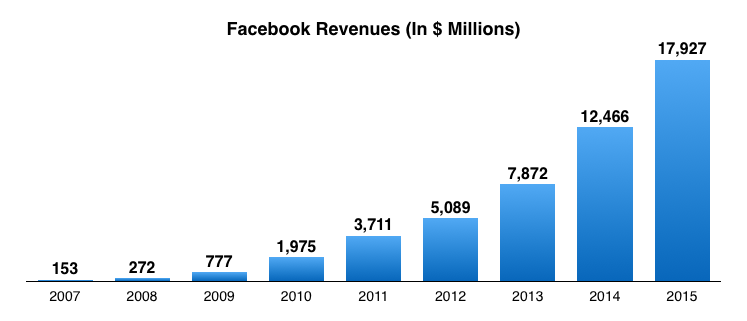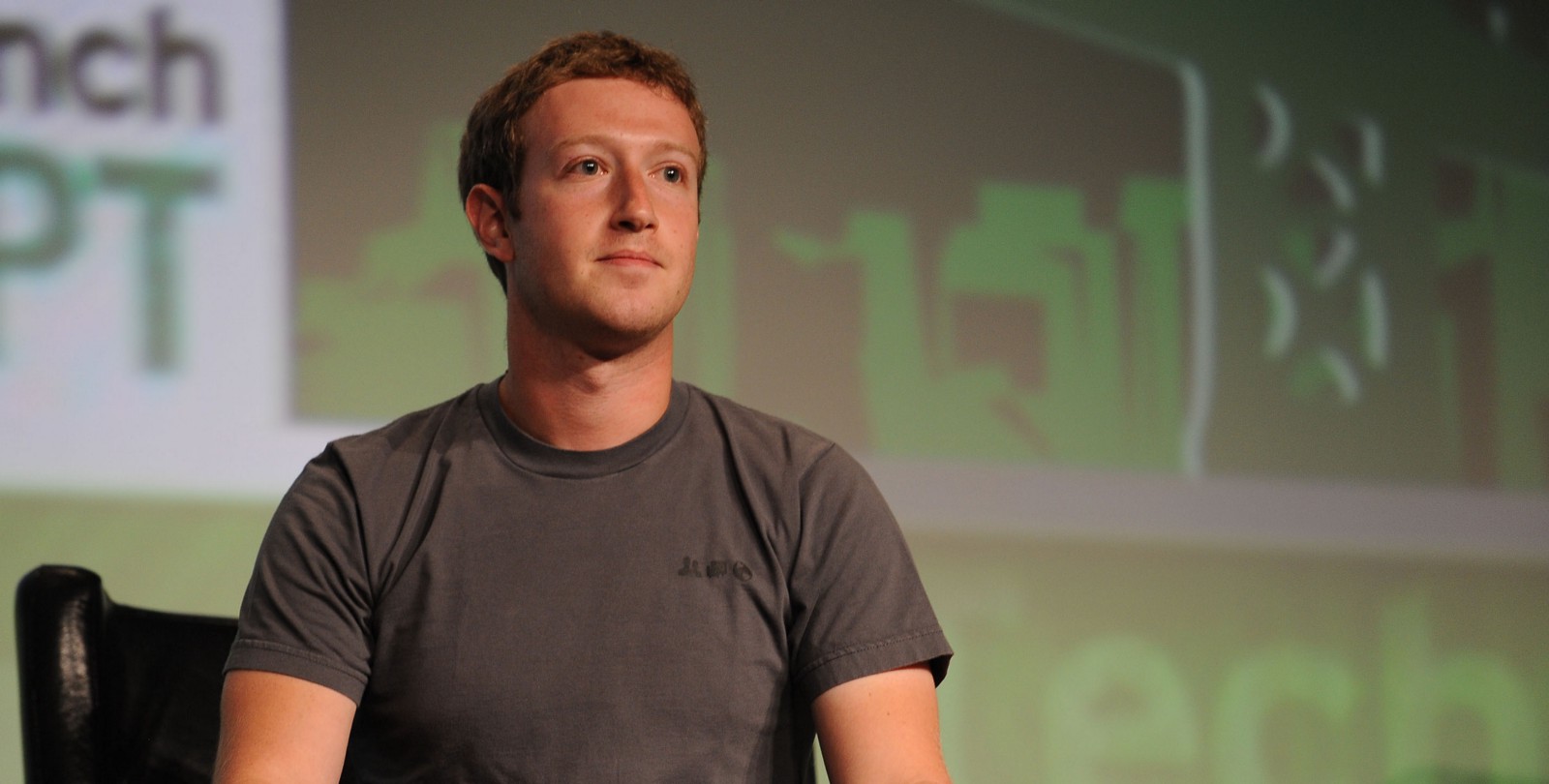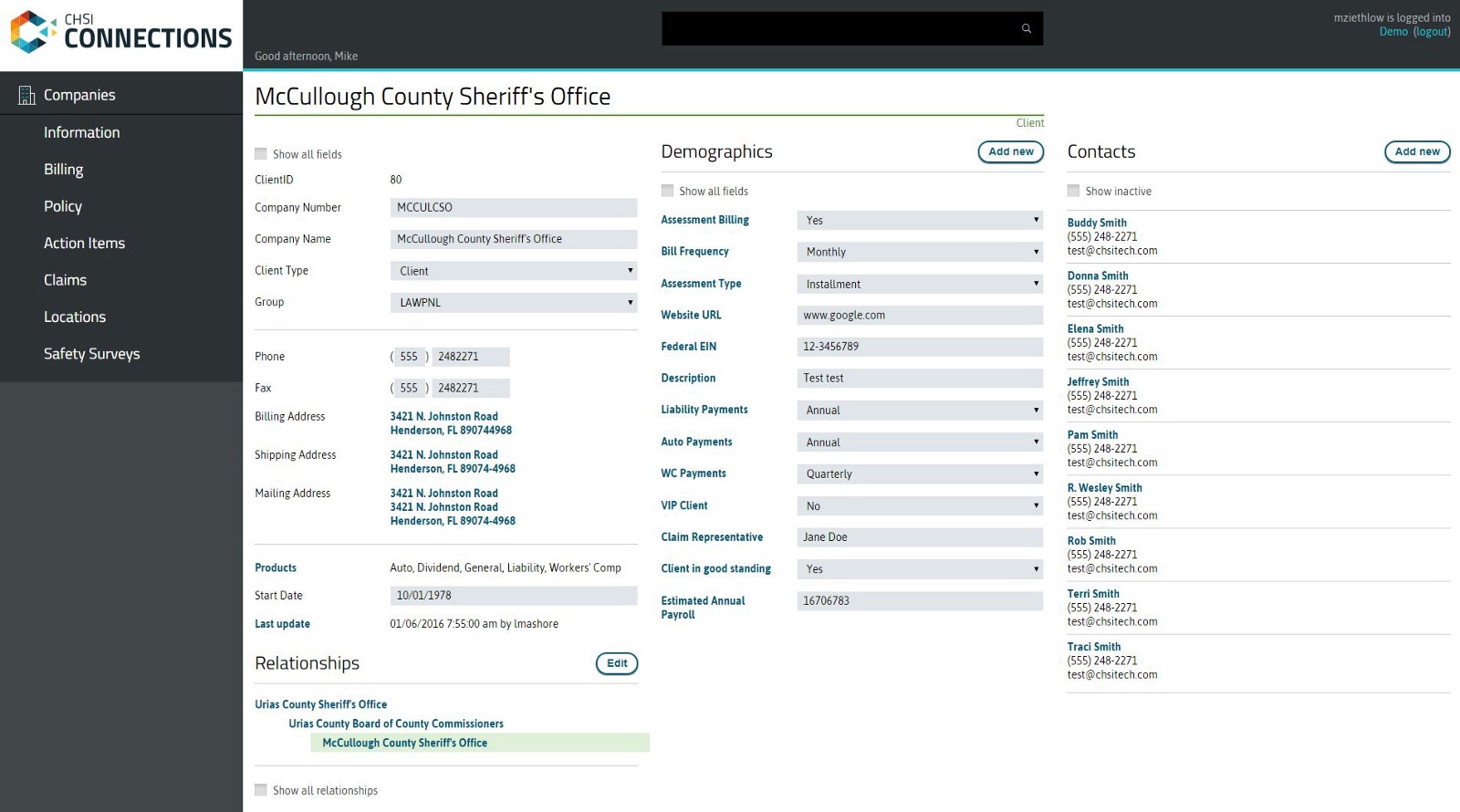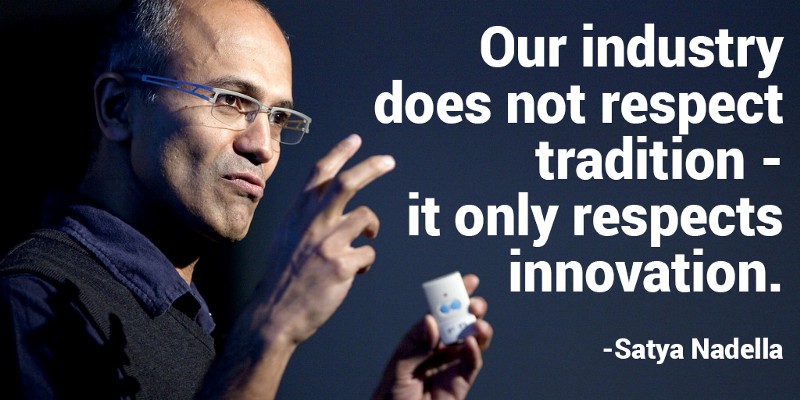You won’t please everyone, or what the redesign of the 2006 Facebook feed teaches us
- Transfer
Imagine: you are a software developer. You have been included in the team working on the redesign of one of the central functions of the application created by the company. For several months you collected information about users, made prototypes, tested them on a control group (everyone liked it!) And redid the application. And today, the updated version has been released to the public.
Now imagine that thousands of people opposed the renewal. They began to create web pages for opponents of the new feature. They decided to declare a massive boycott of the product. An article appeared in Time with a detailed analysis of your failure.

In such a situation, you would probably think that it’s time to refresh your LinkedIn profile (of course, keeping silent about this fiasco): as soon as the director rakes up what you have done, he will immediately fire you.
Now imagine that all these people were wrong. You did a study. You tested the application on the control group (everyone liked it!). Imagine that while hundreds or even thousands of users were protesting, everyone else continued to use the product and profits increased significantly. Imagine that in fact your redesign has changed the world and the way people communicate with each other.
The Facebook feed story is one of my favorite stories from the world of design. When the news feed first saw the light in 2006, I lived on campus and students literally staged protest marches in front of me.
People ruthlessly hit Facebook. It seemed that everyone considered it his duty to speak out, and the reviews were totally negative.
“Recently, in the world of Facebook, events have been unfolding so that you involuntarily wonder if Mark Zuckerberg is writing the book“ How to Spoil a Social Network ”, a standard reaction of an average blogger in 2006 .
And, of course, now, ten years later, we all know how it all ended.

Source The
news feed has not gone away, the timeline has replaced the mini-tape, Mark Zuckerberg takes the fifth place among the richest people on the planet and some even say that he could run for president .
The expression “flipping a tape” firmly entered the vocabulary of modern man, and the corresponding action became an ordinary part of everyday life. The “ fucked up ” Facebook team actually created something so needed, powerful, and addictive that 99% of the population simply can't come off.
Now you’ll definitely mention this project on LinkedIn and in the resume.
Everyone was not opposed - it only seemed so. By the time the news feed was rolled out, Facebook had 12 million users . Groups of protesters (which, funnily enough, formed just on Facebook) like Students Against Facebook News Feed gathered " over 700,000 participants ." For an angry crowd, the dimensions are decent, but still not enough to outweigh the silent majority, who looked at the update and thought: “Wow, great.”
These are two main camps: users who think to themselves: “Wow, great” and users who organize protests. You can’t write a good article in Time about those who are satisfied and leafing through their news. Even if they make up the vast majority.
Let's take advantage of the back mind and see what factors led this radical redesign of the base function to success:
The Facebook team has prototyped, tested, iterated and tested the application again on users. The test participants liked everything! Bloggers who had access to the application before the release gave it a “ positive rating ”. All data spoke in favor of the introduction of the news feed.
However, when faced with a flurry of complaints, it’s hard not to give in to emotions. I would like to do anything if only to leave the line of fire.
But if you did your best in the early stages of development, then you have nothing to fear. The storm will calm down. Reliable data does not lie.
You need to be a good leader to stay on the side of the team and steadfastly endure criticism. Many company directors would not have the guts to say over 700 thousand users: “Take it easy. Inhale, exhale. We heard you . ”
In this regard, Facebook also did everything right. All the while the indignation remained at its peak, Mark Zuckerberg kept himself without any arrogance. He listened to complaints and set up the team to more fully take into account the interests of these users in the future. But at the same time, he did not give up, did not cancel what was done, and did not offer ridiculous compromises (for example, making the tape an optional option).
He showed understanding, but remained firm.

I must admit: the story of the news feed was reminded to me because I myself had recently been bombarded with indignant letters about the new CRM interface, which my team from GHSI Technologies had just released .


The old and new versions of the user interface
are much less user base than Facebook, so I had the opportunity to work with each of the applicants individually. In the first few days after the release, I phoned a dozen dissatisfied users.
At first, I doubted whether I was doing the right thing, but then I decided to rely on the collected data. Talking with users, I sympathetically listened to what they did not like in the new version. Then I asked again. And yet, and yet, until it reached the root of the problem and their needs.
In each case, these needs could be met within the framework of the new design. Someone needed to be told how to delete part of the data on their side (a more transparent new design revealed some old flaws regarding working with data). Others needed minor adjustments to make the interface optimally suited to their needs.
I turned to my inner Zuckerberg: showed understanding, but remained firm.
Suppose, somewhere around 6% of your user base openly opposes innovation and boycotts a product, while the remaining 94% accept the change indifferently. In this case, things are not going well with you and your indignation may outweigh, especially if the company is scrupulous about “maintaining the image”. But if the number of people who like the new version exceeds the number of those who are dissatisfied (even if they express their opinion less actively), the update will stay afloat, provided that the company follows the chosen course.
Again: I recently experienced all this on myself. The first two third-party reviews from users that I received on the redesign sounded like this:
“Great, just great! Thank you and your team for doing so much to develop the system. ”
and
“We don’t like it at all. Please return the old interface to us as soon as possible. ”
Both reviews came in handy. The first served as a small positive reinforcement, which helped once again make sure that the data that we collected at the beginning of the work can be trusted. And in the second case, I got the opportunity to call a disappointed client right away and for “pleasant conversation” (this is his expression) to solve his problems. Towards the end of the conversation, he even volunteered to participate in future prototype beta tests!
If opinions about your innovation are strongly divided, the main thing is that the number of its supporters (including the silent ones) be greater, and then everything will work out.
The team that created the news feed was surely shocked by these hundreds of thousands of negative reviews. But I'm sure someone immediately drew the attention of the rest to the fact that millions of users have mastered the new format and are happy with it.
When customers shout at you, argue with you over changes - this is a painful experience. You may be tempted to put an end to this, to offer them a way out.
The head of the online publication Mashable, Pete Cashmore predicted that Facebook will yield under pressure from users:
The Facebook team could make one of two catastrophically wrong decisions:
The first option is bad in that it is a decision that is based on pure emotions and does not take into account the results of the study. The second is even worse, because the team thereby refuses to make a decision. Now she has no choice but to maintain two code bases, which will cost twice as much. Instead of throwing 100% of people to develop new useful functions, they will give 50% of the resource to empty work to maintain the old code in attempts to please 6% of the audience.
When Cashmore says things like: “Facebook just needed to be able to disable the feature,” it seems that he never wrote the code himself and was not even familiar with this process. If you think about consequences for at least a second, such a proposal will disappear immediately.
Companies have to constantly struggle with the desire to preserve outdated solutions as a sign of respect for traditions or because of nostalgia on their way to new iterations and improved redesigns.
Now Microsoft is experiencing this experience with its Microsoft Paint . Microsoft wants to replace the old product, which is already several decades old, with a new tool. And it seems that, without exception, users are resisting this initiative - but is it really so? Are most of them people who are not included in the discussion, but would not mind working with a more modern program?
Many support the old solution, but maybe those who have not abandoned the new, more effective methods are still more?
And if companies, fearing negativity from users, spend their development resources on maintaining old technologies in working condition, then innovative startups for which such problems are irrelevant can seize the initiative and greatly change the situation on the market.

Our industry does not respect traditions - only innovations.
Satya Nadella, Microsoft CEO 2014
But perhaps this is only the reaction of a small but very active audience group.
I do not urge to turn a blind eye to the response of dissatisfied users. Undoubtedly, one should take into account their opinion about the product and watch how they use it. But you do not need to put even the most boisterous users above the most silent.
Therefore, although I collected all the negative reviews about our redesign, in addition to this, I turned to the user base and asked for feedback from them too. And if we assume that all points of view are of equal weight, it became clear which course of movement you need to choose - forward: decisively, with understanding, towards innovation.
Now imagine that thousands of people opposed the renewal. They began to create web pages for opponents of the new feature. They decided to declare a massive boycott of the product. An article appeared in Time with a detailed analysis of your failure.

In such a situation, you would probably think that it’s time to refresh your LinkedIn profile (of course, keeping silent about this fiasco): as soon as the director rakes up what you have done, he will immediately fire you.
Now imagine that all these people were wrong. You did a study. You tested the application on the control group (everyone liked it!). Imagine that while hundreds or even thousands of users were protesting, everyone else continued to use the product and profits increased significantly. Imagine that in fact your redesign has changed the world and the way people communicate with each other.
So it was
The Facebook feed story is one of my favorite stories from the world of design. When the news feed first saw the light in 2006, I lived on campus and students literally staged protest marches in front of me.
"Over the next 24 hours, hundreds of thousands of students across the country organizedly opposed the new design, " Time, September 6, 2006
People ruthlessly hit Facebook. It seemed that everyone considered it his duty to speak out, and the reviews were totally negative.
“Recently, in the world of Facebook, events have been unfolding so that you involuntarily wonder if Mark Zuckerberg is writing the book“ How to Spoil a Social Network ”, a standard reaction of an average blogger in 2006 .
And, of course, now, ten years later, we all know how it all ended.

Source The
news feed has not gone away, the timeline has replaced the mini-tape, Mark Zuckerberg takes the fifth place among the richest people on the planet and some even say that he could run for president .
The expression “flipping a tape” firmly entered the vocabulary of modern man, and the corresponding action became an ordinary part of everyday life. The “ fucked up ” Facebook team actually created something so needed, powerful, and addictive that 99% of the population simply can't come off.
Now you’ll definitely mention this project on LinkedIn and in the resume.
Where does success come from if everyone was against it?
Everyone was not opposed - it only seemed so. By the time the news feed was rolled out, Facebook had 12 million users . Groups of protesters (which, funnily enough, formed just on Facebook) like Students Against Facebook News Feed gathered " over 700,000 participants ." For an angry crowd, the dimensions are decent, but still not enough to outweigh the silent majority, who looked at the update and thought: “Wow, great.”
These are two main camps: users who think to themselves: “Wow, great” and users who organize protests. You can’t write a good article in Time about those who are satisfied and leafing through their news. Even if they make up the vast majority.
Let's take advantage of the back mind and see what factors led this radical redesign of the base function to success:
- Reliance on data
- An innovation that leaves people indifferent
- Company Response to User Response
- Respect for innovation
Reliance on data
The Facebook team has prototyped, tested, iterated and tested the application again on users. The test participants liked everything! Bloggers who had access to the application before the release gave it a “ positive rating ”. All data spoke in favor of the introduction of the news feed.
However, when faced with a flurry of complaints, it’s hard not to give in to emotions. I would like to do anything if only to leave the line of fire.
But if you did your best in the early stages of development, then you have nothing to fear. The storm will calm down. Reliable data does not lie.
You need to be a good leader to stay on the side of the team and steadfastly endure criticism. Many company directors would not have the guts to say over 700 thousand users: “Take it easy. Inhale, exhale. We heard you . ”
Company Response to User Response
In this regard, Facebook also did everything right. All the while the indignation remained at its peak, Mark Zuckerberg kept himself without any arrogance. He listened to complaints and set up the team to more fully take into account the interests of these users in the future. But at the same time, he did not give up, did not cancel what was done, and did not offer ridiculous compromises (for example, making the tape an optional option).
He showed understanding, but remained firm.

I must admit: the story of the news feed was reminded to me because I myself had recently been bombarded with indignant letters about the new CRM interface, which my team from GHSI Technologies had just released .


The old and new versions of the user interface
are much less user base than Facebook, so I had the opportunity to work with each of the applicants individually. In the first few days after the release, I phoned a dozen dissatisfied users.
At first, I doubted whether I was doing the right thing, but then I decided to rely on the collected data. Talking with users, I sympathetically listened to what they did not like in the new version. Then I asked again. And yet, and yet, until it reached the root of the problem and their needs.
In each case, these needs could be met within the framework of the new design. Someone needed to be told how to delete part of the data on their side (a more transparent new design revealed some old flaws regarding working with data). Others needed minor adjustments to make the interface optimally suited to their needs.
I turned to my inner Zuckerberg: showed understanding, but remained firm.
An innovation that leaves people indifferent
Suppose, somewhere around 6% of your user base openly opposes innovation and boycotts a product, while the remaining 94% accept the change indifferently. In this case, things are not going well with you and your indignation may outweigh, especially if the company is scrupulous about “maintaining the image”. But if the number of people who like the new version exceeds the number of those who are dissatisfied (even if they express their opinion less actively), the update will stay afloat, provided that the company follows the chosen course.
Again: I recently experienced all this on myself. The first two third-party reviews from users that I received on the redesign sounded like this:
“Great, just great! Thank you and your team for doing so much to develop the system. ”
and
“We don’t like it at all. Please return the old interface to us as soon as possible. ”
Both reviews came in handy. The first served as a small positive reinforcement, which helped once again make sure that the data that we collected at the beginning of the work can be trusted. And in the second case, I got the opportunity to call a disappointed client right away and for “pleasant conversation” (this is his expression) to solve his problems. Towards the end of the conversation, he even volunteered to participate in future prototype beta tests!
If opinions about your innovation are strongly divided, the main thing is that the number of its supporters (including the silent ones) be greater, and then everything will work out.
The team that created the news feed was surely shocked by these hundreds of thousands of negative reviews. But I'm sure someone immediately drew the attention of the rest to the fact that millions of users have mastered the new format and are happy with it.
Respect for innovation
When customers shout at you, argue with you over changes - this is a painful experience. You may be tempted to put an end to this, to offer them a way out.
The head of the online publication Mashable, Pete Cashmore predicted that Facebook will yield under pressure from users:
“Honestly, I see the only possible outcome: Facebook will be forced to add a“ switch ”- and most users will disconnect from the new system, as a result of which it will be of little use. It is unlikely that Facebook will remove the news feed at all, but it will have to come up with some kind of compromise that would satisfy users. ”
The Facebook team could make one of two catastrophically wrong decisions:
- Return to the previous design and start working with a new layout from scratch.
- Or worse: offer users a choice - “classic” design or “updated”.
The first option is bad in that it is a decision that is based on pure emotions and does not take into account the results of the study. The second is even worse, because the team thereby refuses to make a decision. Now she has no choice but to maintain two code bases, which will cost twice as much. Instead of throwing 100% of people to develop new useful functions, they will give 50% of the resource to empty work to maintain the old code in attempts to please 6% of the audience.
When Cashmore says things like: “Facebook just needed to be able to disable the feature,” it seems that he never wrote the code himself and was not even familiar with this process. If you think about consequences for at least a second, such a proposal will disappear immediately.
Companies have to constantly struggle with the desire to preserve outdated solutions as a sign of respect for traditions or because of nostalgia on their way to new iterations and improved redesigns.
Now Microsoft is experiencing this experience with its Microsoft Paint . Microsoft wants to replace the old product, which is already several decades old, with a new tool. And it seems that, without exception, users are resisting this initiative - but is it really so? Are most of them people who are not included in the discussion, but would not mind working with a more modern program?
Many support the old solution, but maybe those who have not abandoned the new, more effective methods are still more?
And if companies, fearing negativity from users, spend their development resources on maintaining old technologies in working condition, then innovative startups for which such problems are irrelevant can seize the initiative and greatly change the situation on the market.

Our industry does not respect traditions - only innovations.
Satya Nadella, Microsoft CEO 2014
Nobody likes the redesign
But perhaps this is only the reaction of a small but very active audience group.
I do not urge to turn a blind eye to the response of dissatisfied users. Undoubtedly, one should take into account their opinion about the product and watch how they use it. But you do not need to put even the most boisterous users above the most silent.
Therefore, although I collected all the negative reviews about our redesign, in addition to this, I turned to the user base and asked for feedback from them too. And if we assume that all points of view are of equal weight, it became clear which course of movement you need to choose - forward: decisively, with understanding, towards innovation.
